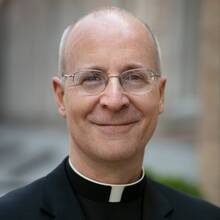As a native (and in my heart current) Philadelphian, I am totally biased about the new film that Kerry Weber has reviewed, "The Art of the Steal," about the highly controversial move of the little-known-but-now-much-more-well-known Barnes Foundation, a small museum in Merion, Pa., (in the burbs) that boasts the world's absolute greatest collection of Post-Impressionist art. I'm talking dozens and dozens of Renoirs, Matisses, Cezannes, more than any other museum anywhere. In any event, Dr. Albert Barnes, the irascible founder of the museum, stipulated that no work in the museum would ever be loaned, moved or sold. Well, guess what? They're being moved. The story of the devilishly clever (some would say downright devilish) machinations behind this "steal" are the subject of the movie, with many who are normally considered good guys coming off as downright bad. Weber begins with the story of the theft in 1911 of the Mona Lisa. The theft is akin to the Barnes Foundation move...
At least, that’s what documentary filmmaker Don Argott would have us believe. Argott’s new film, The Art of the Steal, chronicles the story of how what many consider the world’s greatest collection of French early modern and post-impressionist art was moved from the suburbs of Philadelphia to the city center, against the last wishes of Dr. Albert C. Barnes, the collection’s original owner. In his will, Barnes mandated that his foundation, created in 1922, remain focused on education, refrain from loaning or selling the art, and preserve its democratic nature. His motivation was one part love of art and one part hatred for the elite art world that scorned him.
....
“The Art of the Steal” presents a convincing case to preserve the Barnes, but, in the end it is not Argott’s proof but the questions posed by the film that are most powerful. The final decision of the courts to move the Barnes collection forces us to reconsider the certainty of our own perceived legacies. As one protestor called out to the glitterati at a fundraiser to support the Barnes move: “Wait ‘til it’s your will!” We prepare so carefully for death and yet, the film is a reminder that, when the time comes, the execution of our wishes is beyond our control, left to be interpreted by those who remain.
Check out the rest of Kerry Weber's review here.
James Martin, S.J.







